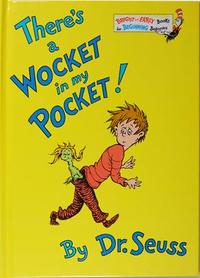
Theodor Seuss Geisel was an American children's author and cartoonist. He is known for his work writing and illustrating more than 60 books under the pen name Dr. Seuss. His work includes many of the most popular children's books of all time, selling over 600 million copies and being translated into more than 20 languages by the time of his death.

The Cat in the Hat is a 1957 children's book written and illustrated by American author Theodor Geisel, using the pen name Dr. Seuss. The story centers on a tall anthropomorphic cat who wears a red and white-striped top hat and a red bow tie. The Cat shows up at the house of Sally and her brother one rainy day when their mother is away. Despite the repeated objections of the children's fish, the Cat shows the children a few of his tricks in an attempt to entertain them. In the process, he and his companions, Thing One and Thing Two, wreck the house. As the children and the fish become more alarmed, the Cat produces a machine that he uses to clean everything up and disappears just before the children's mother comes home.
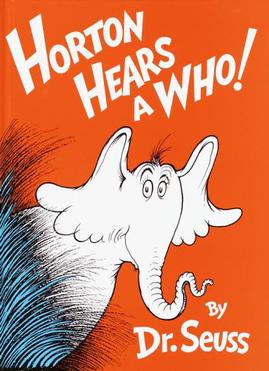
Horton Hears a Who! is a children's book written and illustrated by Theodor Seuss Geisel under the pen name Dr. Seuss. It was published in 1954 by Random House. This book tells the story of Horton the Elephant and his adventures saving Whoville, a tiny planet located on a speck of dust, from the animals who mock him. These animals attempt to steal and burn the speck of dust, so Horton goes to great lengths to save Whoville from being incinerated.

Green Eggs and Ham is a children's book by Dr. Seuss. It was published by the Beginner Books imprint of Random House on August 12, 1960. The book follows Sam-I-am as he follows an unnamed man, repeatedly asking him if he would like to try some green eggs and ham before the man eventually tries it and likes it. Seuss began writing Green Eggs and Ham after his editor Bennett Cerf bet him $50 that he could not write an engaging children's book with a vocabulary of 50 words. Finding the challenge difficult, Seuss used notes, charts, and checklists to keep track of his progress. The book covers themes of conflict between individuals, though Seuss has said that it lacks any deeper meaning. Green Eggs and Ham was widely praised by critics for its writing and illustration, and the challenge of writing a book in 50 words is regarded as a success. The book has been the subject of multiple adaptations, including a television series of the same name in 2019.

The Sneetches and Other Stories is a collection of stories by American children's author Dr. Seuss, published in 1961. It is composed of four separate stories with themes of tolerance, diversity, and compromise: "The Sneetches", "The Zax", "Too Many Daves", and "What Was I Scared Of?". Based on an online poll, the National Education Association listed the book as one of its "Teachers' Top 100 Books for Children". In 2012 it was ranked number 63 among the Top 100 Picture Books in a survey published by School Library Journal – the fifth of five Dr. Seuss books on the list.

Horton Hatches the Egg is a children's book written and illustrated by Theodor Geisel under the pen name Dr. Seuss and published in 1940 by Random House. The book tells the story of Horton the Elephant, who is tricked into sitting on a bird's egg while its mother, Mayzie, takes a permanent vacation to Palm Beach. Horton endures a number of hardships but persists, often stating, "I meant what I said, and I said what I meant. An elephant's faithful, one hundred percent!" Ultimately, the egg hatches, revealing an elephant-bird, a creature with a blend of Mayzie's and Horton's features.

And to Think That I Saw It on Mulberry Street is Theodor Seuss Geisel's first children's book published under the name Dr. Seuss. First published by Vanguard Press in 1937, the story follows a boy named Marco, who describes a parade of imaginary people and vehicles traveling along a road, Mulberry Street, in an elaborate fantasy story he dreams up to tell his father at the end of his walk. However, when he arrives home, he decides instead to tell his father what he actually saw—a simple horse and wagon.

Yertle the Turtle and Other Stories is a picture book collection by Theodor Seuss Geisel, published under his more commonly known pseudonym of Dr. Seuss. It was first released by Random House Books on April 12, 1958, and is written in Seuss's trademark style, using a type of meter called anapestic tetrameter. Though it contains three short stories, it is mostly known for its first story, "Yertle the Turtle", in which the eponymous Yertle, king of the pond, stands on his subjects in an attempt to reach higher than the Moon—until the bottom turtle burps and he falls into the mud, ending his rule.

On Beyond Zebra! is a 1955 illustrated children's book by Theodor Geisel, better known as Dr. Seuss. In this take on the genre of alphabet book, Seuss presents, instead of the twenty-six letters of the conventional English alphabet, twenty additional letters that purportedly follow them.

Hop on Pop is a 1963 children's picture book by Dr. Seuss, published as part of the Random House Beginner Books series. The book is subtitled "The Simplest Seuss for Youngest Use", and is designed to introduce basic phonics concepts to children.

The Seven Lady Godivas: The True Facts Concerning History's Barest Family is a picture book of the tale of Lady Godiva, written and illustrated by Dr. Seuss. One of Seuss's few books written for adults, its original 1939 publication by Random House was a failure and was eventually remaindered. However, it later gained popularity as Seuss himself grew in fame, and was republished in 1987 by "multitudinous demand".

McElligot's Pool is a children's book written and illustrated by Theodor Geisel under the pen name Dr. Seuss and published by Random House in 1947. In the story, a boy named Marco, who first appeared in Geisel's 1937 book And to Think That I Saw It on Mulberry Street, imagines a wide variety of fantastic fish that could be swimming in the pond in which he is fishing. It later became one of the Seuss books featured in the Broadway musical Seussical where its story is used for the song "It's Possible".

Happy Birthday to You! is a 1959 children's book by Dr. Seuss, the first all-color picture book.
Beginner Books is the Random House imprint for young children ages 3–9, co-founded by Phyllis Cerf with Ted Geisel, more often known as Dr. Seuss, and his wife Helen Palmer Geisel. Their first book was Dr. Seuss's The Cat in the Hat (1957), whose title character appears in the brand's logo. Cerf compiled a list of 379 words as the basic vocabulary for young readers, along with another 20 slightly harder "emergency" words. No more than 200 words were taken from that list to write The Cat in the Hat. Subsequent books in the series were modeled on the same requirement.
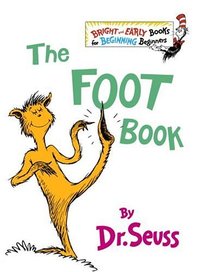
The Foot Book is a children's book written by Dr. Seuss and first published in 1968. Intended for young children, it seeks to convey the concept of opposites through depictions of different kinds of feet. The text of The Foot Book is highly stylized, containing the rhymes, repetitions, and cadences typical of Dr. Seuss's work.

I Am Not Going to Get Up Today! is a children's book written by Dr. Seuss and illustrated by James Stevenson. It was published by Random House on October 12, 1987. It is the only Dr. Seuss book not to be illustrated by Seuss himself. The book is told from the perspective of a boy who decides not to get out of bed as his family and neighbors try to convince him to get up. Audio versions have been released, including a cassette tape in 1988 and an audiobook read by the actor Jason Alexander in 2003.
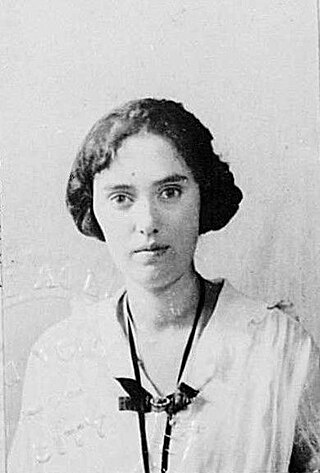
Helen Marion Palmer Geisel, known professionally as Helen Palmer, was an American children's writer, editor, and philanthropist. She was also the Founder and Vice President of Beginner Books, and was married to fellow writer Theodor Seuss Geisel, better known as Dr. Seuss, from 1927 until her death.
The Theodor Seuss Geisel Award is a literary award by the American Library Association (ALA) that annually recognizes the "author(s) and illustrator(s) of the most distinguished book for beginning readers published in English in the United States during the preceding year." The winner(s) receive a bronze medal at the ALA Annual Conference, presented by the Association for Library Service to Children (ALSC) division of ALA.
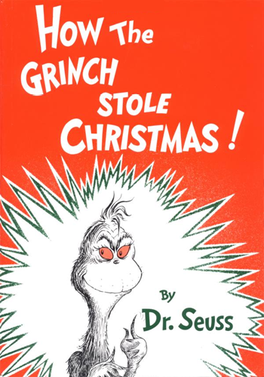
How the Grinch Stole Christmas! is a Christmas children's book by Theodor "Dr. Seuss" Geisel written in rhymed verse with illustrations by the author. It follows the Grinch, a cranky, solitary creature who attempts to thwart the public's Christmas plans by stealing Christmas gifts and decorations from the homes of the nearby town of Whoville on Christmas Eve. Miraculously, the Grinch realizes that Christmas is not all about money and presents.
Theodor Seuss Geisel, better known as Dr. Seuss, published over 60 children's books over the course of his long career. Though most were published under his well-known pseudonym, Dr. Seuss, he also authored a certain amount of books as Theo. LeSieg and one as Rosetta Stone.
